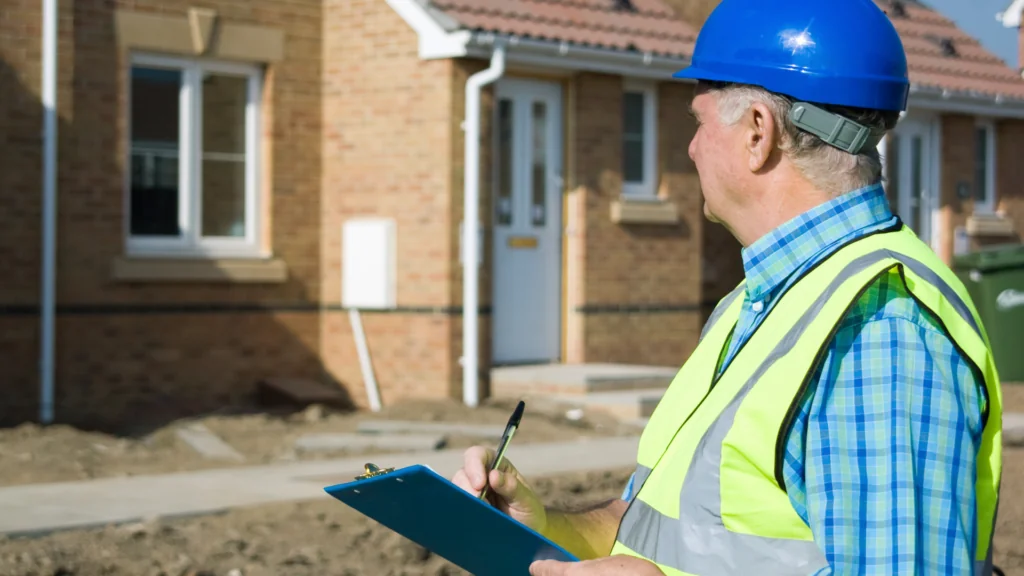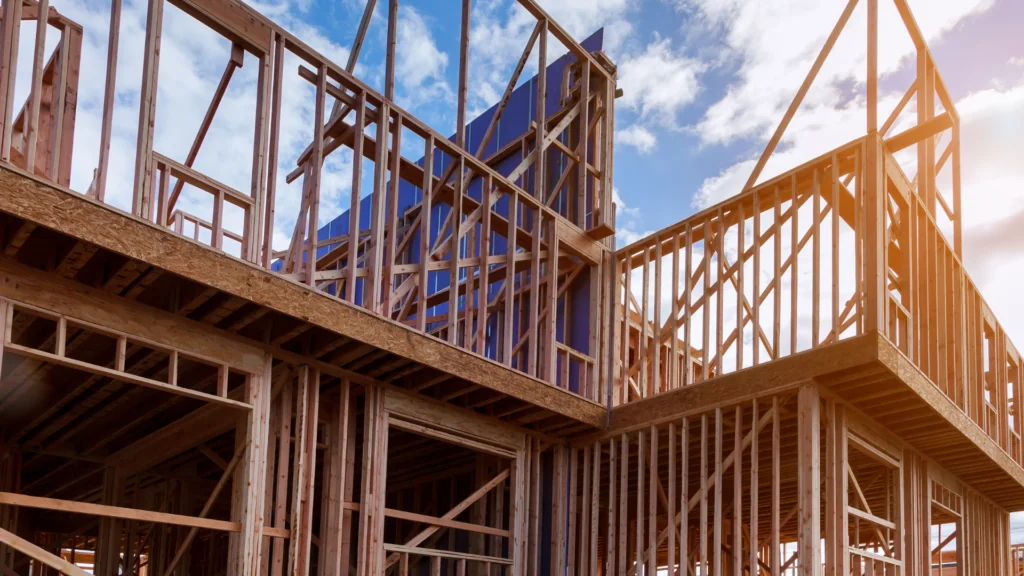- What is a Leasehold Property?
- Can You Get a Mortgage on a Leasehold Property?
- How Much Can You Borrow?
- Are You Eligible?
- How to Get a Mortgage for Leasehold Properties?
- The Pros and Cons of Buying a Leasehold Property
- What Are the Costs and Fees When Buying a Leasehold?
- Extending Your Lease
- Buy To Let Mortgages for Leasehold Properties
- Remortgaging a Leasehold Property
- Key Takeaways
- The Bottom Line
Leasehold Mortgages: Minimum Lease Terms and What to Expect

You’ve probably noticed that leasehold properties, especially in busy UK cities, are often more affordable.
If you’re looking to buy a flat, chances are you’re considering a leasehold. With the right mortgage, it can be a good investment.
But, there are a few differences from buying a freehold, like how long the lease lasts and some extra costs.
Don’t worry, though. Once you know about these things, getting a mortgage for your leasehold is pretty easy.
This guide will tell you what to look for and how to get the best deal, so you’re ready to take the next step.
What is a Leasehold Property?
When you buy a leasehold property, you’re essentially buying the right to live in that property for a set amount of time – usually quite a long time, but not forever.
This period could be anything from 40 years to 999 years, depending on the lease agreement.
But the catch? You don’t actually own the land that your home sits on – that’s still owned by a freeholder, also known as the landlord.
In other words, you’re a very long-term tenant. You own the building or the flat, but not the land beneath it.
Once the lease runs out, the property goes back to the freeholder, unless you renew or extend the lease.
Can You Get a Mortgage on a Leasehold Property?
Yes, you can get a mortgage on a leasehold property, but there are a few things you need to know. The most important factor is the length of the lease.
If the lease is too short, lenders might not feel comfortable lending. Most will want at least 70 years left when you buy.
Barclays is fine with 70 years, but Nationwide prefers 125 years for new build flats. Santander is happy with 55 years at the start, as long as 30 years remain when the mortgage ends.
Lenders also like to see the lease lasting at least 40 years beyond your mortgage. This helps keep the property’s value from dropping too much. If the lease is under 80 years, it might be worth extending it to avoid problems with getting a mortgage.
Lenders will also look at other things, like ground rent, estate charges, and any cladding issues (needing an EWS1 Form). If these raise concerns, they might ask for a bigger deposit or refuse to lend.
If the freeholder is missing, you might need an Absent Landlord Indemnity Policy to get a mortgage. Even then, some lenders may still not lend, though larger ones are usually more flexible.
It’s always a good idea to speak to a mortgage broker for advice. They can help you find the right lender and make things easier for you.
How Much Can You Borrow?
How much you can borrow on a leasehold property largely depends on the loan-to-value (LTV) ratio offered by the lender.
The LTV is the ratio between the mortgage amount and the property value.
For example, if a lender offers an LTV of 85% on a leasehold property, and you’re buying a property worth £200,000, you’d need to put down a £30,000 deposit and borrow the remaining £170,000.
Generally, LTVs for leasehold properties tend to be lower compared to freeholds.
Lenders might lend up to 90% on a freehold, but often only around 85% for a leasehold flat.
And if it’s a new-build flat, expect the LTV to be even lower – often capped at 75%.
This means you’ll need a larger deposit for a leasehold property, especially if it’s newly built.
Curious about how much you can borrow? Use our Loan-to-Value Calculator to work out the deposit you’ll need and what you could borrow based on the property’s value.
Are You Eligible?
Before you jump into applying for a mortgage of a leased property, there are some important criteria you’ll need to meet.
Leasehold mortgage requirements can vary from lender to lender, but here’s what most lenders will be looking for:
- A lease length of at least 70-85 years at the time of mortgage completion.
- At least 30-40 years remaining on the lease at the end of the mortgage term.
- A good credit history – leasehold mortgages can be riskier for lenders, so having a solid credit score will boost your chances.
- Proof of income and employment stability.
- A larger deposit compared to freehold properties (usually at least 15-20%).
- If the property is non-standard (e.g., unusual construction), you may need to find a specialist lender.
- Age can be a factor – older borrowers may have more difficulty securing a longer mortgage term for a leasehold.
- Additional requirements such as proof of ground rent and service charges, or an Absent Landlord Indemnity Policy if the freeholder is absent.
How to Get a Mortgage for Leasehold Properties?
Getting a mortgage for a leasehold property is quite similar to getting a standard mortgage, with just a few differences regarding lender requirements.
Here’s a quick guide:
- Understand Lease Length Requirements. Most lenders want at least 70 years left on the lease. Make sure it extends at least 30-40 years beyond the end of your mortgage.
- Save for a Larger Deposit. Expect to need a larger deposit compared to freeholds, often 15-25%.
- Check Your Credit Score. A good credit score will help your application, as leasehold mortgages can be riskier for lenders.
- Prepare Documentation. Be ready with details on ground rent, service charges, and other paperwork.
- Work with a Specialist Broker. A good broker can help you find leasehold-friendly lenders.
For a more detailed discussion, check out our complete guide on mortgage applications.
The Pros and Cons of Buying a Leasehold Property
Buying a leasehold property has its perks and pitfalls, so let’s weigh them up.
The Pros:
- Leasehold properties can often be more affordable than freehold properties, making it easier for first-time buyers to get on the property ladder.
- You might have access to shared spaces, like gardens or communal areas, that are maintained by someone else – less hassle for you.
- Maintenance and repairs of the building structure might be handled by the freeholder.
The Cons:
- Property value can drop as the lease length decreases, especially if it dips below 80 years. Extending a short lease can also be costly.
- You’ll need to pay ground rent, service charges, and possibly other maintenance fees.
- Mortgage options may be more limited and involve higher deposits and lower LTVs.
- You won’t have control over the land, which can mean restrictions on what you can do with your property, such as adding extensions.
What Are the Costs and Fees When Buying a Leasehold?
There are a few extra costs that come into play when buying a leasehold compared to a freehold.
Conveyancing Fees
The conveyancing process for leasehold properties is more complex and often more expensive.
Expect to pay higher conveyancing costs due to the extra paperwork and checks involved, especially when dealing with the lease administrator.
Ground Rent and Service Charges
As a leaseholder, you’ll need to pay ground rent to the freeholder, along with service charges for maintenance and upkeep of the building.
These costs can vary widely depending on the property, so it’s worth checking before you buy.
Lease Extension Costs
If the lease length is approaching 80 years, you’ll likely want to extend it.
But beware – lease extension costs can range from a few thousand pounds to over £15,000, and if the lease falls below 80 years, you’ll also have to pay 50% of the “marriage value,” which is the added value to the property once the lease is extended.
Extending Your Lease
Extending your lease is an important consideration if you plan to buy a leasehold property, especially if the lease is under 80 years.
Once the lease length drops below this threshold, not only does the property value start to fall, but the costs to extend it increase as well.
You can extend the lease either through a formal route (after owning the property for at least two years) or through an informal agreement with the freeholder.
To avoid the two-year waiting period, it’s possible to start the lease extension process at the point of sale – the seller can issue a notice that transfers to you when the sale completes.
Buy To Let Mortgages for Leasehold Properties
Leasehold flats and apartments are popular choices for buy-to-let investors, particularly in city centres.
But, getting a buy to let leasehold mortgage can be slightly trickier.
Many of the same rules for residential mortgages apply, but you should expect higher interest rates and lower LTVs.
Lease lengths are still crucial, with most lenders wanting at least 70 years remaining on the lease, and often more for new build flats.
Remortgaging a Leasehold Property
If you already own a leasehold property and want to remortgage, be prepared for a few extra hoops to jump through.
Your lender will usually require additional checks from a conveyancer to ensure the lease is in good standing.
Plus, you’ll need to let the freeholder know about your plans, and they’ll have to agree to your remortgage proposal. The freeholder might also charge a notice fee for this.
If you’re looking to extend your lease and remortgage at the same time, it’s definitely possible. But it may come with specific requirements, such as LTV caps and additional checks, so expert advice is highly recommended.
Key Takeaways
- Leasehold mortgages are possible, but the length of the lease plays a big role in your eligibility.
- Shorter leases (below 80 years) can make getting a mortgage more challenging and expensive.
- You’ll often need a larger deposit for a leasehold property, and LTV ratios may be lower.
- Expect extra costs such as ground rent, service charges, and higher conveyancing fees.
- Lease extension can be costly, especially for leases under 80 years, and it’s wise to address this as early as possible.
The Bottom Line
Buying a leasehold property can be a good way to get on the property ladder, but it has its challenges.
You need to understand how the lease length affects your mortgage options, be aware of extra costs, and choose the right lender.
If you’re prepared and know what to expect, a leasehold property could be the perfect home or investment for you.
Just make sure you get the right advice, check the lease carefully, and understand your budget before making any decisions.
Not sure where to start? We can help.
Get in touch with us and we’ll match you with a qualified mortgage broker who specialises in leasehold properties. They’ll help you find the right lender and make the process as simple as possible.
Get Matched With Your Dream Mortgage Advisor...

Frequently asked questions
Can I buy my freehold?
Yes, you can. Leaseholders have a legal right to buy the freehold, provided they meet certain conditions.
You may also need to reach an agreement with other leaseholders in your building. If the landlord is unwilling to sell, you could explore the Leasehold Reform Act 1967 for help.
What is the difference between leasehold and freehold?
A leasehold means you own the building but not the land it’s built on – you essentially lease it from the freeholder. With a freehold, you own both the building and the land it stands on, outright and forever.




